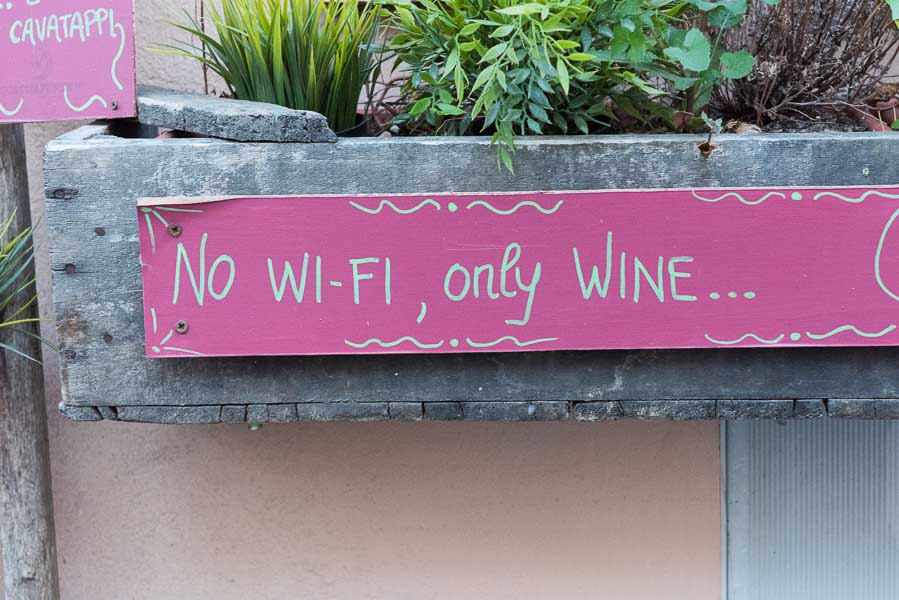
If you drive two hours northwest from Rome you’ll find rolling hills striped with grapevines, delicious local cuisine, medieval hilltop towns, Renaissance art, and no tourists in the off-season. You’re not in Tuscany, but it’s southern neighbor, Umbria, Italy’s green heart.
Landlocked in the center of Italy, Umbria is a region of scattered jewels rather than one giant gemstone. The region’s capital, Perugia, has a rich artistic and cultural heritage. Assisi is the burial place of St. Francis and a pilgrimage town. In March, my husband Matt and I went to the countryside near Montefalco to relax, drink wine, cook Umbrian food, and make chocolate.
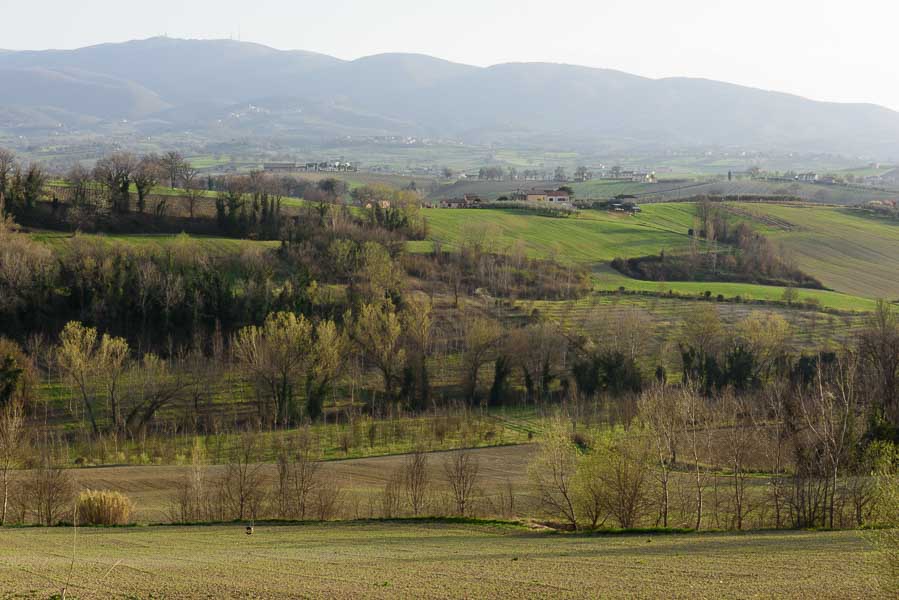
Travelers, especially Americans, overlook this idyllic Italy. Indeed, after the 2016 earthquakes that struck Amatrice (a two-hour drive from Montefalco) and Norcia (a one-hour drive), even Italian tourists avoided the area. Almost all of Italy is a seismic risk at some level. Before leaving, we registered with the State Department’s Smart Traveler Enrollment Program, just in case.
We rented a house for a week at Casale Satriano in the vineyards of the Antonelli San Marco winery. Views of grapevines, olive groves, and rolling hills greeted us at every turn. Distant hilltop towns defined by their towers surrounded us. Only birdsong and the occasional tractor broke the silence. A resident cat adopted us and brushed up against my leg each evening when the sun cast a golden glow over the valley at sunset.
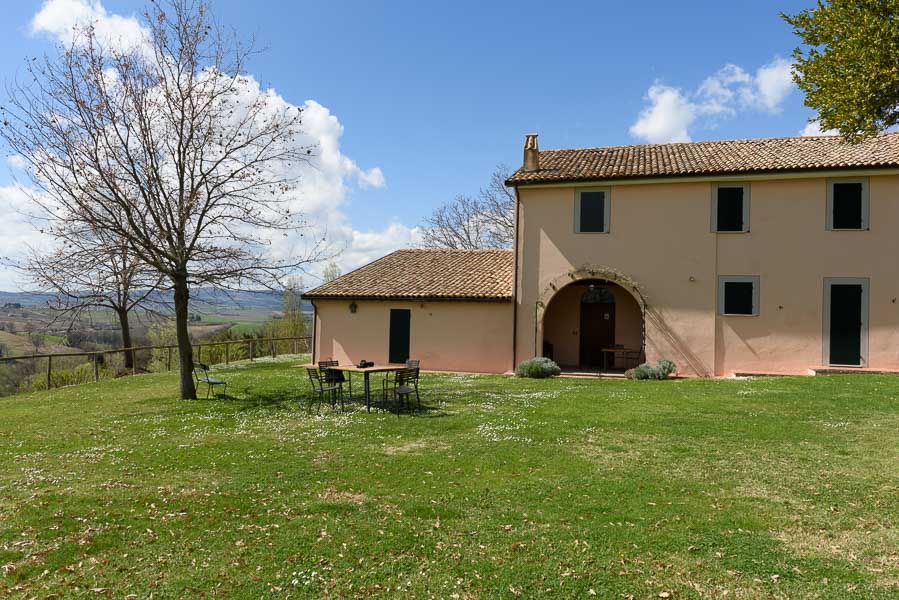
Montefalco was an easy five-minute drive. We parked outside the city walls and walked up to the charming piazza fronted by restaurants and shops that offered olive oil and wine tastings. At Oro Rosso, we shared a local lasagna to start followed by turkey for Matt, and pigeon with guinea fowl for me, all homemade, all fresh local ingredients. The wine, of course, was excellent, and all were reasonably priced.
Corks threaded on strings hung from the doorway to La Scimmia, the local bar a quarter-mile walk up from our apartment. Wine for sale lined one wall, snacks on another. One gentleman sliced cheese and meat for sandwiches and made coffees. He insisted on sampling us a tasty cheese platter to try with our espressos. The wine by the glass was excellent and I thought I mistranslated the price we paid for it all. No, it really was that inexpensive.
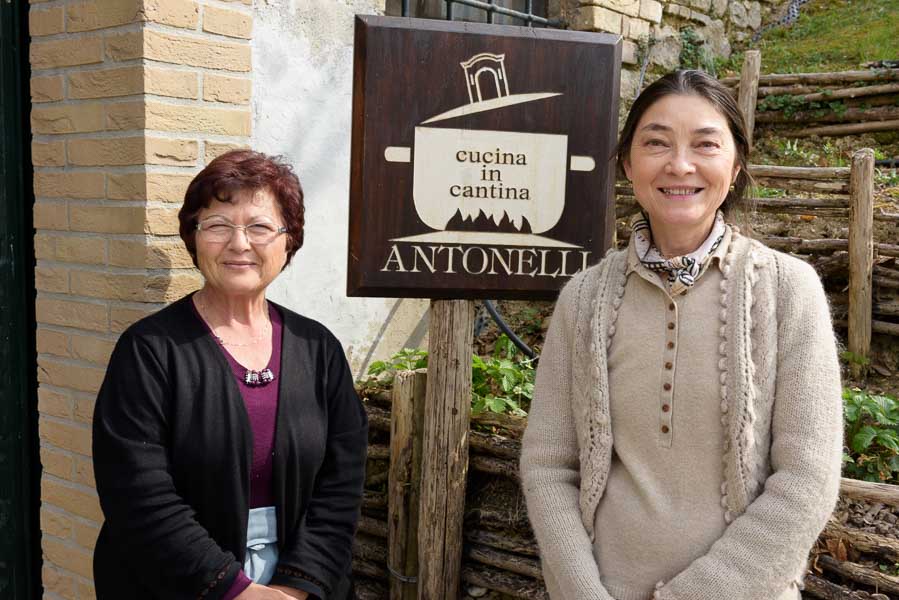
Australian Wendy Aulsebrook runs Antonelli San Marco’s Cucina in Cantina program. We met Wendy and her associate Leonella our first evening, having reserved a wine dinner. Luckily we were the only guests this time of year. Over salumi made from the winery’s free-range pigs, then homemade farro pasta from local organic wheat, Wendy recommended restaurants and wine bars in neighboring villages to try.
Once nearly extinct, winemakers in Montefalco revived the indigenous Sagrantino grape in the 1970s. By 1992, Sagrantino di Montefalco wine had acquired the highest government quality ranking of DOCG. The dark, full-bodied red is made with 100% Sagrantino grapes and ages well. Area producers also make white wines from the local grapes Grechetto and Trebbiano Spoletino, and blend Sagrantino with Sangiovese to make Montefalco Rosso.
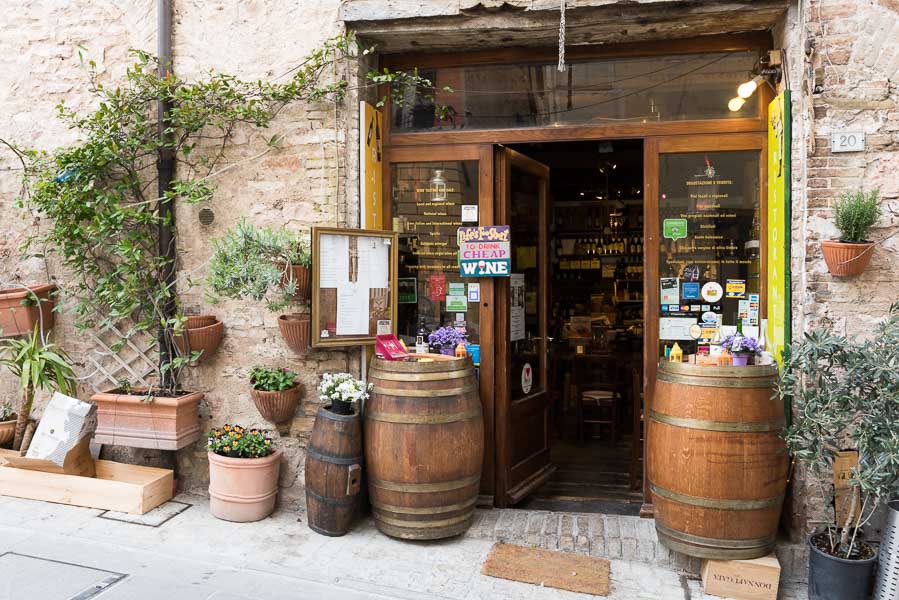
The next day we lunched at Wendy-recommended Osteria Antiche Sere in Bevagna, a beautiful medieval riverside town. After a walk through Bevagna, we drove to Spello, an ancient walled village with views over the plain. We ended up at Drinking Wine, a wine bar Wendy liked. In the middle of the day, off-season, we had it to ourselves.
L’Alchimista in Montefalco became our favorite restaurant. Too cold to eat dinner on the piazza, we ate indoors, which quickly packed with locals. Not only were we the only Americans, we were the only tourists. Fresh butter and wild sage ravioli was our highlight, although Matt loved his hand-chopped hamburger. We returned for lunch and ordered the ravioli again, it was that good.
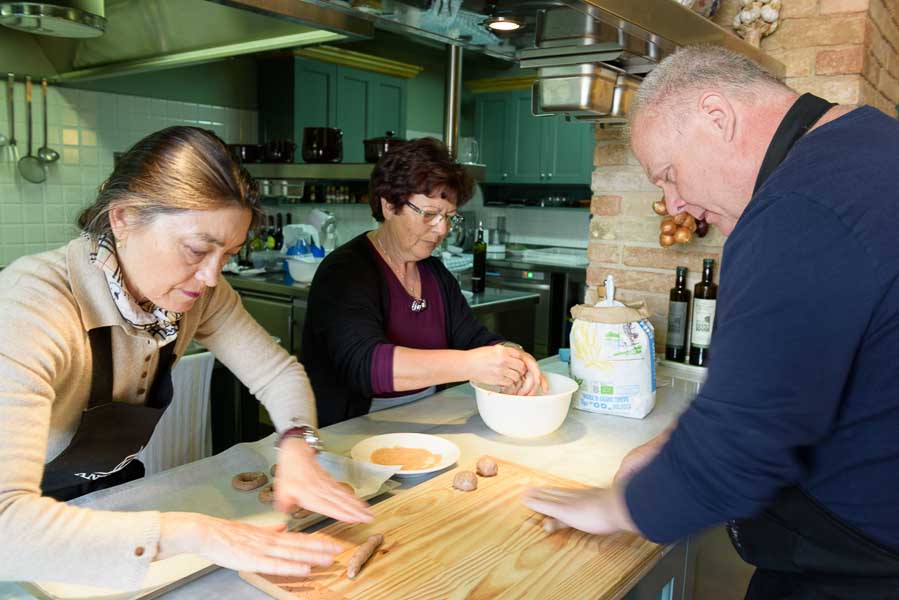
We were given a souvenir apron with our cooking class and I use it often. It has long ties that Wendy taught us to cinch in the front to tuck a towel into so you can always dry your hands. We learned how to make an onion frittata, (without burning the onions) and fresh pasta. Rosemary focaccia’s dents are from pressing it out with fingertips. The best roasted chicken I’ve had, zucchini sauce for the pasta, red wine cookies, panna cotta, and potatoes with vegetables rounded out our meal. Paired with fantastic Antonelli wines, of course!
In Spoleto, an ancient hill town known for its Romanesque architecture and arts festival, we encountered tourists for the first time. Spoleto is a larger city with historic sights galore. We were on a mission to find a scolapasta, a pasta colander basket Wendy and Leonella had used. We trudged up steep narrow lanes amid dozens of small souvenir shops, none of which had a scolapasta. We found one instead in a tiny store outside Montefalco’s city walls.
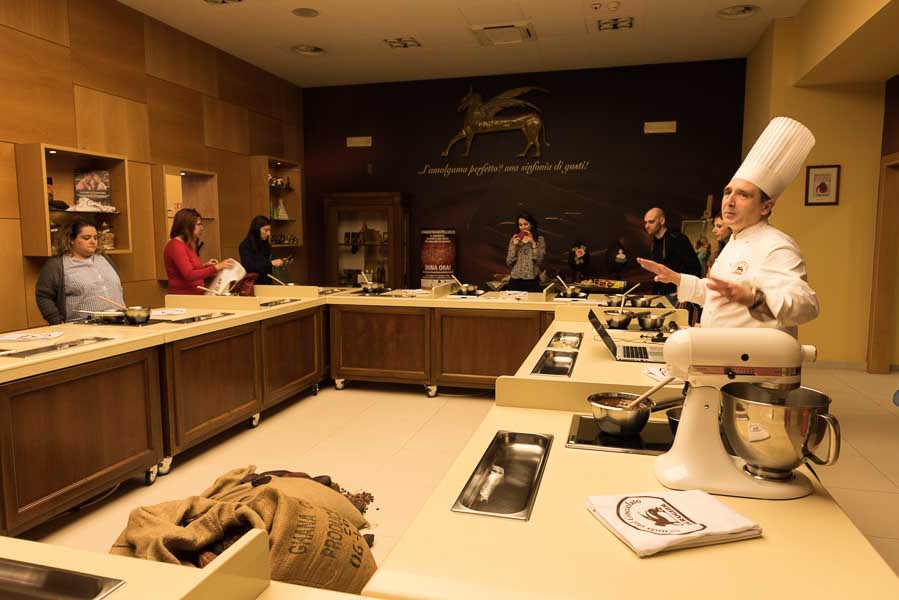
We received another apron at the chocolate-making class we took at the Perugina factory’s Chocolate School near Perugia. For three hours we made chocolate truffles and bars (and a huge mess) at our stations in the kitchen. The chef spoke Italian but we understood enough to leave with 36 truffles each and two kilos of chocolate bars. Afterwards, we toured the factory and stocked up on my favorite Baci chocolate kisses at their shop.
The Paolo Bea family has roots in Montefalco that date back to the 1500s. Today, under Giampiero Bea’s direction, they make highly-esteemed natural wines “by observing and listening to nature.” They use only indigenous yeasts; they don’t use any chemicals or additives, and don’t accelerate the winemaking process. Their respect for nature extends to the cantina— Giampiero designed their beautiful new winery to let air circulate through the building. As a small producer reliant on the weather, their production is limited—each bottle is numbered. But their wines are worth seeking out, much like Umbria.
